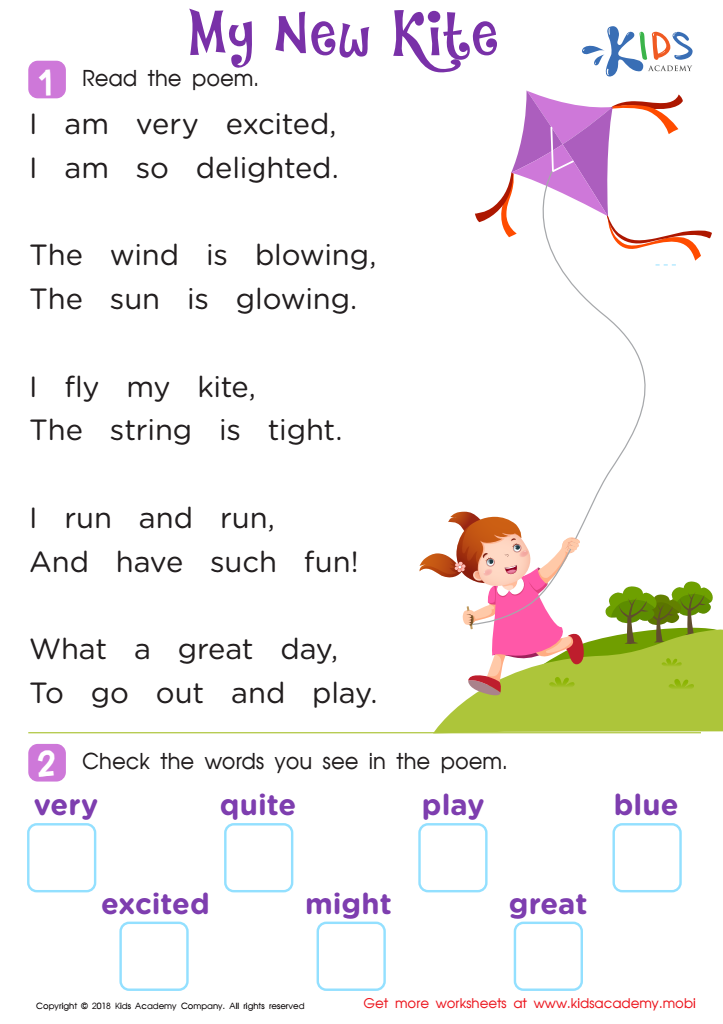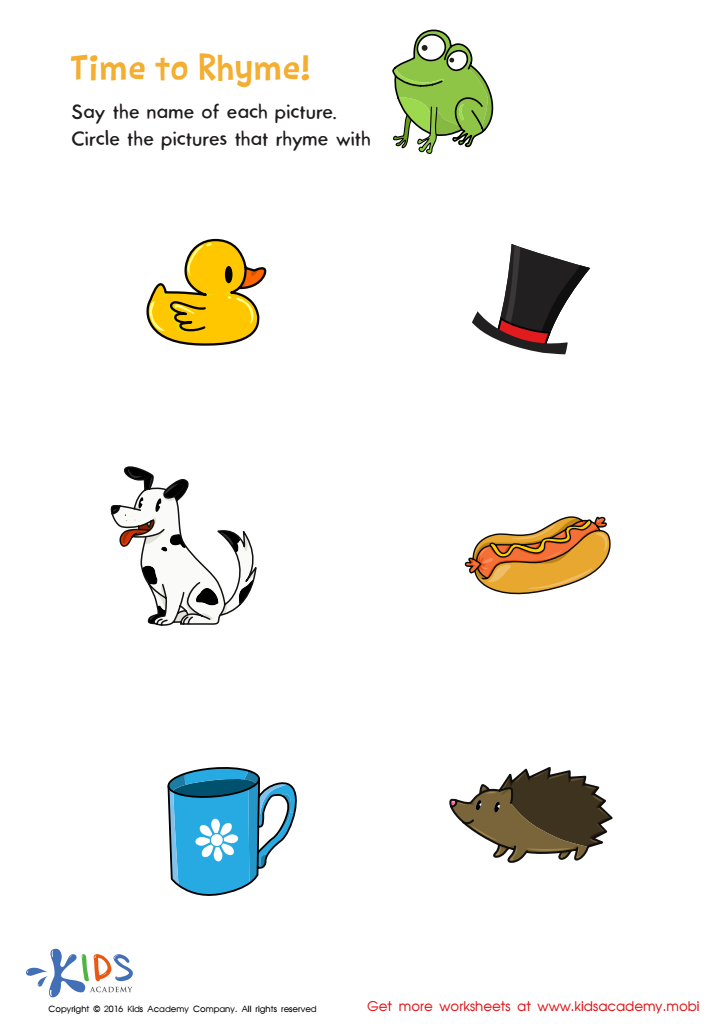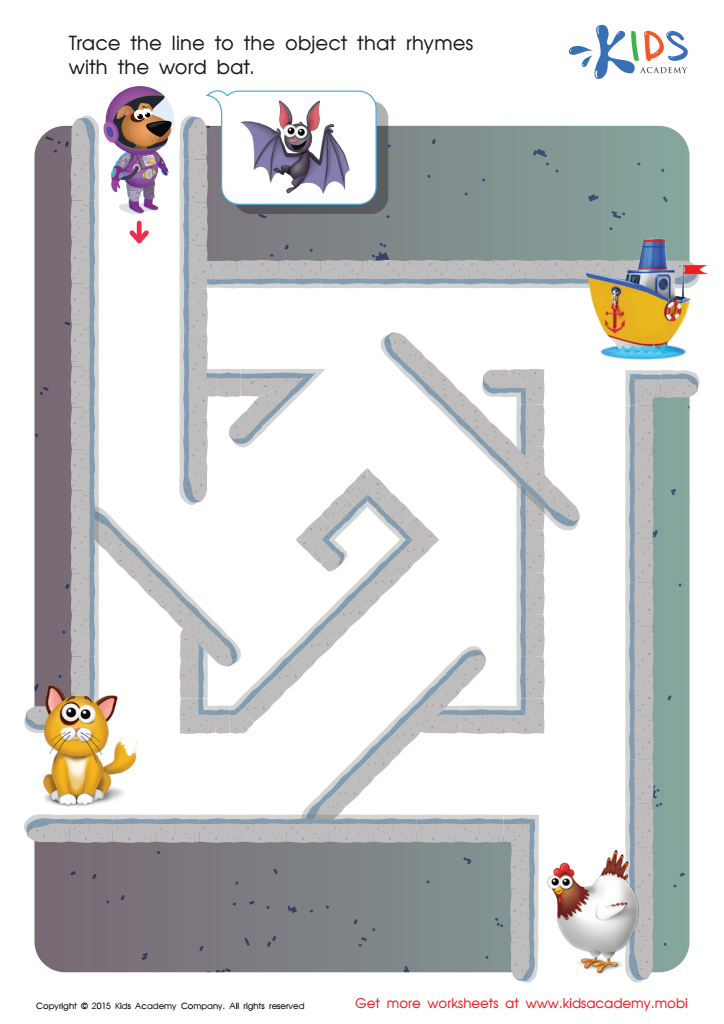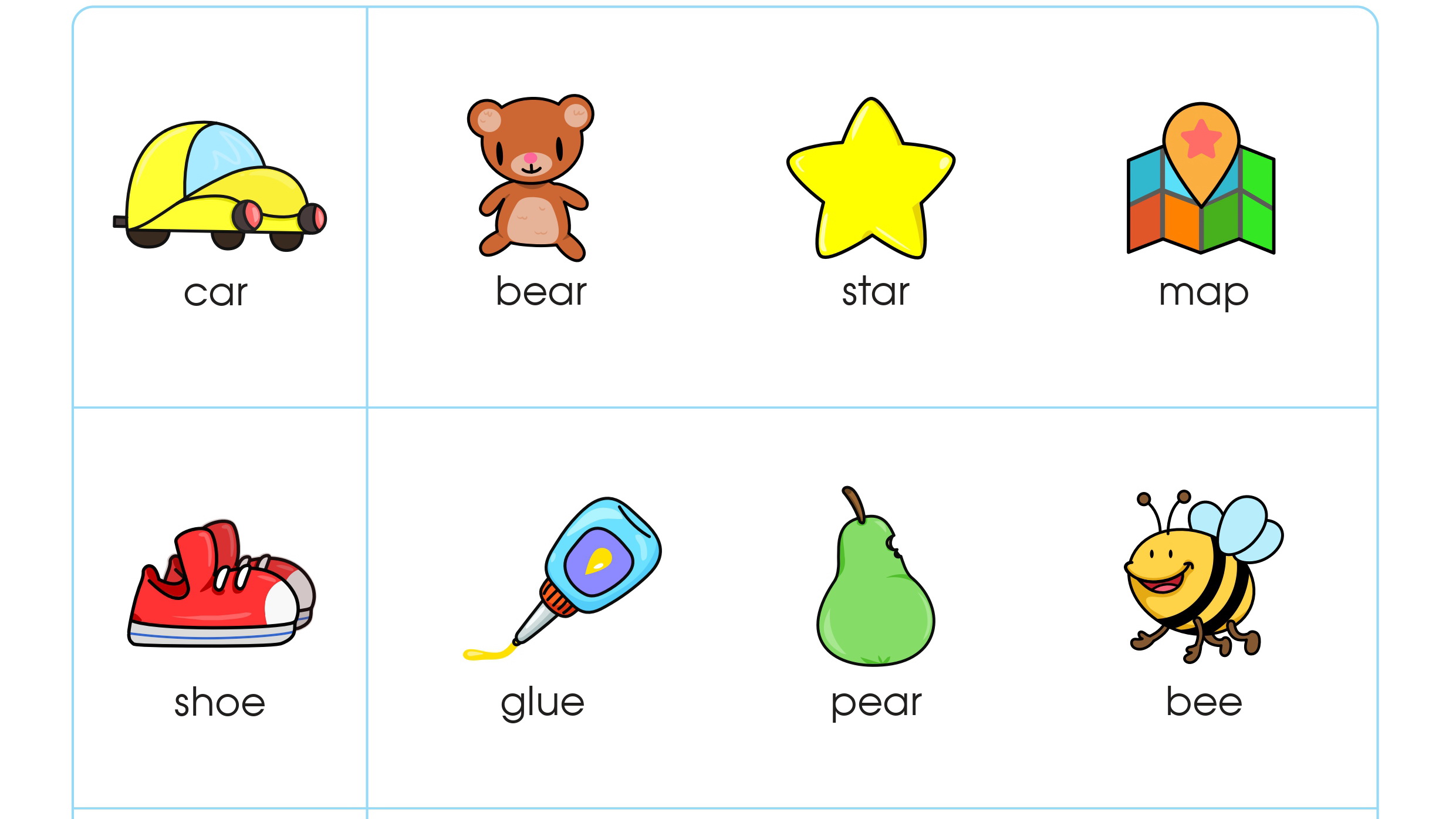Vocabulary Building Rhyming Words Worksheets for Ages 4-8
3 filtered results
-
From - To
Discover our engaging Vocabulary Building Rhyming Words Worksheets designed for children ages 4-8! These printable resources focus on enhancing vocabulary skills through the fun rhythm of rhymes. Each worksheet offers diverse activities, such as matching pairs, filling in blanks, and creative writing prompts that encourage young learners to explore language in a playful way. By identifying and creating rhyming words, children not only boost their phonemic awareness but also strengthen their reading and speaking abilities. Perfect for teachers and parents, these worksheets make learning enjoyable and effective. Start your child’s journey to linguistic confidence with our expertly crafted materials today!


Poem: My New Kite Worksheet


Rhyming Worksheet: Time to Rhyme Rhyming Worksheet


Bat Rhyming Words Worksheet
Vocabulary building through rhyming words is essential for children aged 4-8, as it lays a strong foundation for literacy and language skills. During these formative years, children are especially receptive to sounds and patterns in language. Engaging with rhyming words helps them develop phonemic awareness, which is crucial for reading proficiency. Recognizing and producing rhymes can improve their ability to decode words and understand letter-sound relationships.
Furthermore, rhyming activities can make learning fun and interactive, capturing children's curiosity and attention. They promote a love for language through songs, poems, and playful word games, enhancing retention. Additionally, exposure to rich vocabulary through rhymes expands children’s word bank, contributing to better expressive and receptive language abilities.
Socially, sharing rhyming games in a group setting fosters collaboration and communication, essential skills for academic and personal success. Parents and teachers should prioritize rhyming activities in their teaching strategies to support not just reading readiness, but also cognitive development in areas such as memory and reasoning. By nurturing a child's vocabulary through playful rhymes, we equip them with the tools they need to express themselves effectively and build confidence in their language skills, setting them on a path to lifelong learning.

 Assign to My Students
Assign to My Students





















